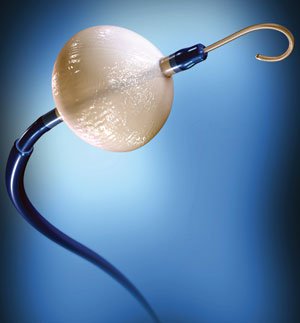Newly approved cryoablation balloon may change nature of ablation procedure
STOP-AF data revealed a significant advantage in using cryoablation catheter system vs. antiarrhythmic drugs in patients with paroxysmal AF.
The FDA has recently approved the Arctic Front Cardiac CryoAblation Catheter system for the treatment of patients with atrial fibrillation, making it the first and only cryoballoon technology available for patients with this disease.
According to a press release, treatment with the Arctic Front (Medtronic CryoCath LP) system involves a minimally invasive procedure that works to isolate the pulmonary vein. Nitrous oxide is delivered through an inflatable balloon structure to freeze tissue and stop the conduction of AF.
“The way it was traditionally done with radiofrequency (RF) energy was to use point by point, so you take a catheter and try to encircle the veins by making multiple points into a circle. That’s a fundamentally difficult task because you have to make sure all the points connect; it’s time-consuming, and you have to make sure you get all the way around and isolate the circle,” said David M. Steinhaus, MD, medical vice president of Medtronic. “Now, instead, we have a very cold balloon that allows you to occlude the vessel for a brief period of time, which makes a seal all the way around the pulmonary veins. Theoretically, in one freeze, you can isolate the pulmonary vein.”
|
Source: Medtronic |
Recently, data from the STOP-AF trial suggested that 70% patients with paroxysmal AF who received treatment with the Arctic Front were free of paroxysmal AF at 1 year without requiring antiarrhythmic drug therapy, whereas only 7% of patients treated with antiarrhythmic drugs were free paroxysmal AF at 1 year.
Vivek Reddy, MD, the Helmsley Trust Professor and director of cardiac electrophysiology at The Mount Sinai Medical Center, New York, said how the device has functioned on a clinical level. “It’s relatively easy to use, and certainly easier than standard point-to-point RF ablation,” Reddy said. “From a safety perspective, I think it will prove — in head-to-head studies, which have yet to be done — to be a little safer than RF ablation. And for efficacy, it will be comparable to RF ablation. My guess is that it will do very well in clinical practice.”
Overall, Steinhaus concluded, “Our technology is disruptive in the sense that it’s easier, simpler and less complex and takes less time [than RF ablation]. So it frees up physicians to do more cases with less stress and requires less technical expertise to do the procedure than the RF field.” – by Brian Ellis
Disclosure: Dr. Reddy has received grant support for research efforts from Medtronic CryoCath and lecture fees for invited presentations from Medtronic.

